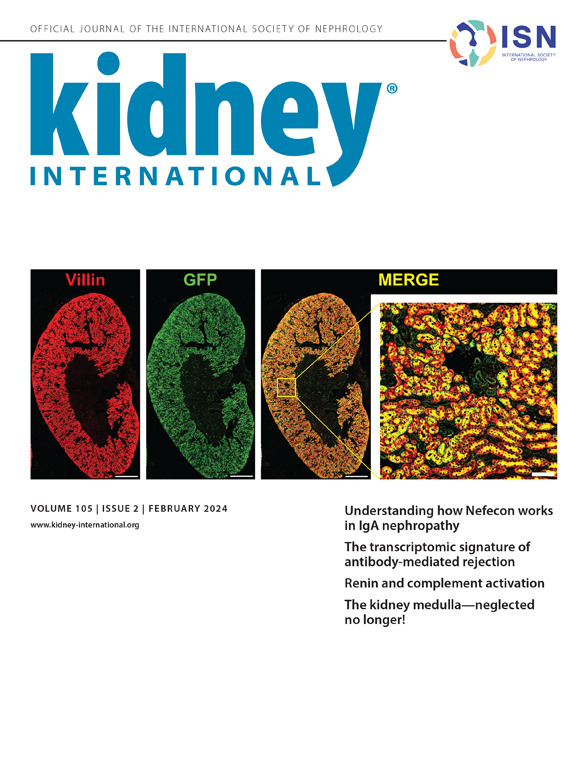Can you have a cake and eat it? Comparing reducing mycophenolate versus switching to everolimus for kidney transplants with new-onset BKPyV-DNAemia
IF 14.8
1区 医学
Q1 UROLOGY & NEPHROLOGY
引用次数: 0
Abstract
BK polyomavirus remains a vexing issue in kidney transplantation. There are no antiviral drugs, and solely reducing immunosuppression is recommended for management. However, evidence from randomized controlled studies lacks defining clearance of BK polyomavirus-DNAemia and/or nephropathy as a primary outcome. In this arena of strong opinions, hesitancy, and poor industry interest, Caillard et al. from 16 centers in France take the bull by the horns and present compelling data on clearance of new-onset BK polyomavirus-DNAemia at 6 months after randomizing 130 kidney transplant patients 1:1 to reduced calcineurin inhibitors plus reduced mycophenolate or switching to everolimus. Although both protocols preserve renal allograft function, the mycophenolate arm performs better numerically and kinetically. Thus, everolimus cannot unfold its presumed antiviral effect. The study has potential to serve as new reference for reducing immunosuppression, being neither “mycophenolate first” nor “calcineurin inhibitors first,” but “first both.” The bar has been set very high now for other interventions alone or on top of “first both.”
求助全文
约1分钟内获得全文
求助全文
来源期刊

Kidney international
医学-泌尿学与肾脏学
CiteScore
23.30
自引率
3.10%
发文量
490
审稿时长
3-6 weeks
期刊介绍:
Kidney International (KI), the official journal of the International Society of Nephrology, is led by Dr. Pierre Ronco (Paris, France) and stands as one of nephrology's most cited and esteemed publications worldwide.
KI provides exceptional benefits for both readers and authors, featuring highly cited original articles, focused reviews, cutting-edge imaging techniques, and lively discussions on controversial topics.
The journal is dedicated to kidney research, serving researchers, clinical investigators, and practicing nephrologists.
 求助内容:
求助内容: 应助结果提醒方式:
应助结果提醒方式:


